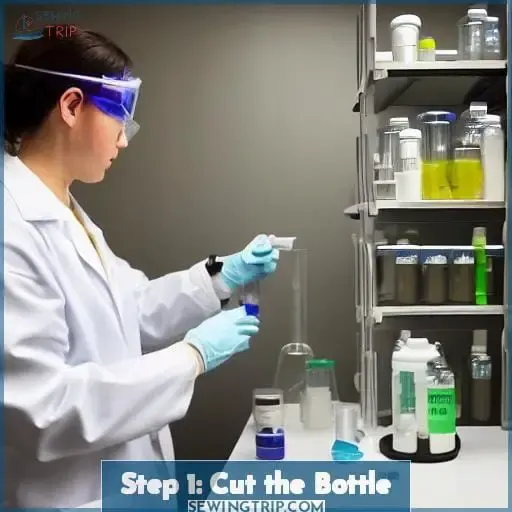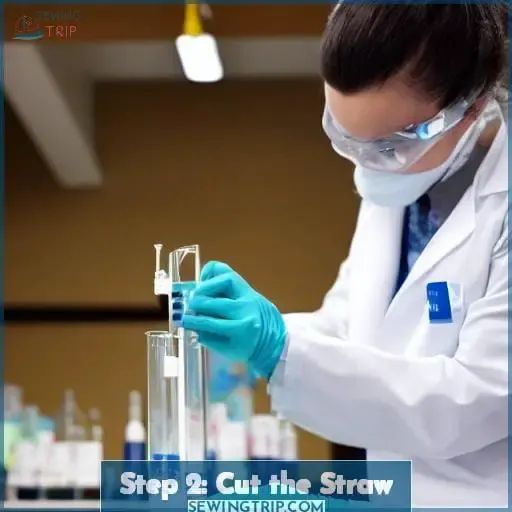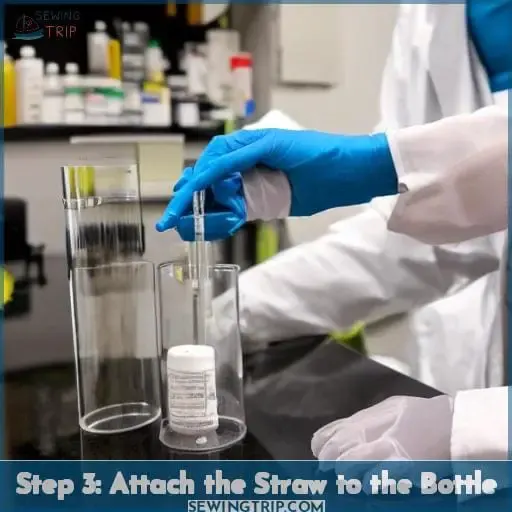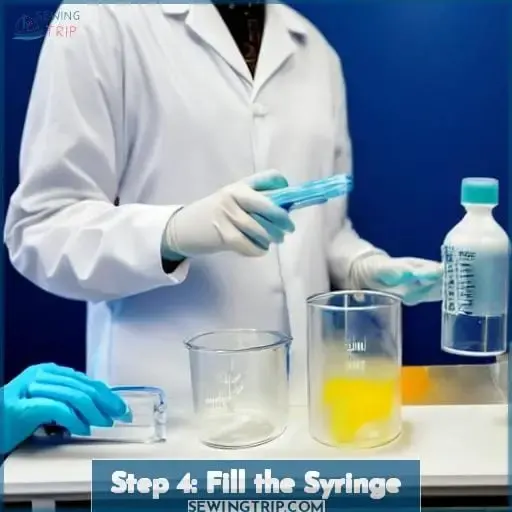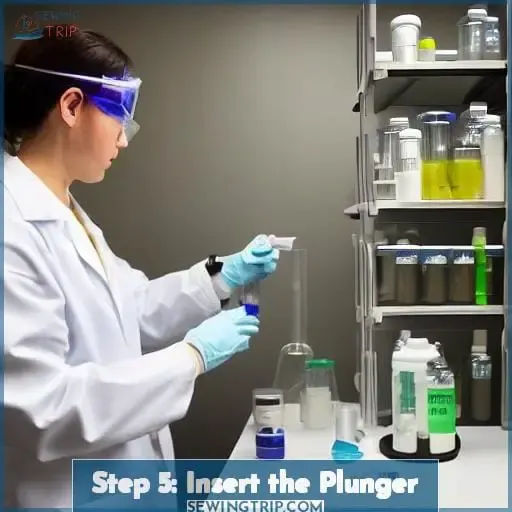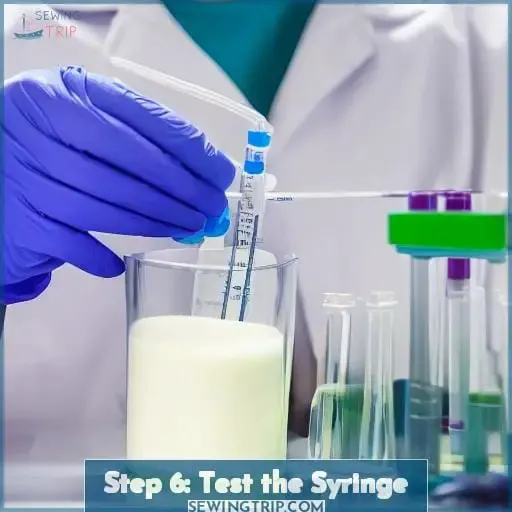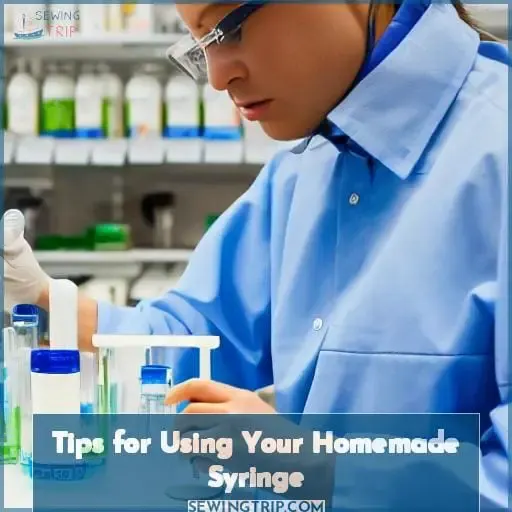This site is supported by our readers. We may earn a commission, at no cost to you, if you purchase through links.
Making a homemade syringe is easier than you think! Jenny needed to give her dog medication and was looking for an affordable way to do it, so she decided to try making her own. We’ll show you how easy it can be. Just a few materials from most households are needed.
We’ll walk you through each step: cutting the bottle and straw, attaching them together, and filling up your new syringe.
So if you’re looking for a cost-effective solution when giving medicine or other liquids orally, keep reading. We’ll show you how simple it can be to make your own DIY medical device.
Table Of Contents
Materials Needed
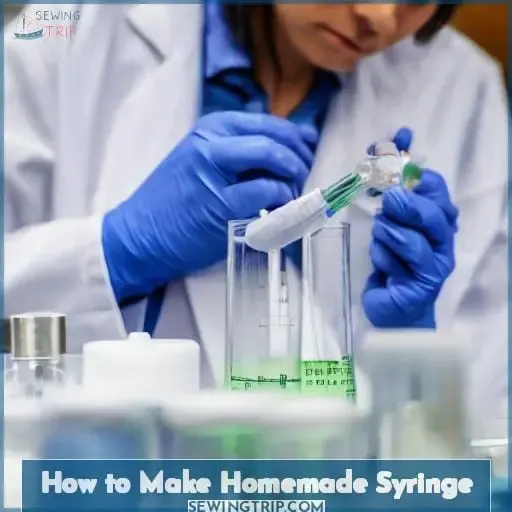
You’ll need non-toxic supplies such as plastic tubing, rubber stoppers, and an adhesive like epoxy. As well as safety equipment including protective gloves and face masks for when you’re working with materials that can be hazardous or irritating if inhaled or touched directly.
It’s important to take proper steps while making a syringe at home to ensure its safe use. Syringe safety tips include using only sterile tools during construction and sterilizing your homemade device after assembly by boiling water for several minutes before first use.
With care taken through these measures, you can make sure any medical uses of the homemade syringes won’t put someone’s health in danger due to contamination from improper sanitation techniques employed during production.
There are many types of DIY medical devices which may require different methods, but following basic guidelines should guarantee their safe usage afterward when used for various purposes like medication injections etc.
Step 1: Cut the Bottle
Take a deep breath and grab your scissors; it’s time to begin transforming an ordinary bottle into your very own syringe! Start by corking the bottle, so you can create a plunger. Use sharp scissors to cut off the top of the bottle as close to its neck as possible. Clean and sterilize all items needed for creating your homemade syringe to avoid contamination or infection from bacteria or viruses.
After cutting off the top, use sandpaper or an emery board to smooth out any rough edges on both sides. Then design a nozzle and handle for your syringe.
Here’s what needs doing:
- Corking the bottle
- Forming the plunger
- Sterilizing the supplies
- Creating the nozzle and designing the handle
You may feel overwhelmed at first, but don’t worry. With patience, precision, and practice comes mastery! If you complete each step correctly – from corking to forming, then sterilizing supplies until creating nozzle designs – you’ll soon be able to construct professional, homemade medical-grade quality products safely.
Step 2: Cut the Straw
Now it’s time to cut the straw and start making your very own syringe! This step is important, as a well-cut straw is essential for creating a quality homemade syringe.
Take safety precautions, such as wearing eye protection and gloves. Have all necessary washing supplies nearby, so materials used in making the syringe can be sanitized afterwards.
Depending on the design of syringe you’re making, cutting techniques may vary. Common methods include using scissors or kitchen shears. When selecting scissors or other tools, consider their environmental impact. Many items made from plastic won’t decompose easily if discarded improperly.
Keep these tips in mind while working, and soon you’ll have created a unique homemade syringe just like those found at medical supply stores!
Step 3: Attach the Straw to the Bottle
Now it’s time to attach the straw to your bottle, transforming it into a makeshift syringe. You can think of this as ‘building’ your own medical device – you’ll be amazed!
Make sure the tube is properly in line with the plunger depth. This will help with good blood flow control and pressure when using larger needles.
Securely fasten one end of a rubber band around both item’s necks. Then wrap thread along their length for extra stability.
Once secure enough, you’re ready for step 4: creating suction power by pulling back on the plunger!
Step 4: Fill the Syringe
Now it’s time to fill the syringe with your chosen liquid. Before you do, make sure all materials have been sterilized according to recommended techniques. This will prevent contamination or infection. Ensure a proper plunger design – it should be tight enough for accurate measurements, but not too difficult to pull back. Pay attention when selecting needle size – needles too large can cause irritation, and too small may block thicker liquids like oils or creams. With these considerations taken into account, you can enjoy the benefits of the homemade syringe safely and effectively!
Step 5: Insert the Plunger
Now insert the plunger with a powerful push, and you’re almost ready to use your incredible homemade syringe! Ensure the plunger is of correct design for your particular type of syringe shape. With force, attach the needle securely at one end while keeping it in line with its corresponding groove on top of the body.
Hold onto both ends firmly as you apply pressure when pushing in or pulling out:
- The Plunger
- The Syringe Body
- The Needle
- Air Vent
That way you can complete this last step and be ready for whatever challenge comes next!
Step 6: Test the Syringe
Now it’s time to test your syringe and see if everything works properly! Fill the barrel with water or another liquid. Place the tip in a container filled with liquid and slowly pull back on the plunger. The liquid should be drawn in without any leaks or spills.
Once you’ve tested your homemade syringe, it’s time to get creative! You can use it for all sorts of DIY projects: painting, creating molds, making seals, designing shapes, drilling holes. With a little practice and experimentation, you’ll soon become an expert at using your homemade syringe for all kinds of tasks around home or work. So go ahead – put those skills to good use and start exploring new possibilities today!
Tips for Using Your Homemade Syringe
Building Technique: Make sure all parts fit together snugly, check for air leaks and make sure the plunger head moves freely.
Cleaning Protocols: Disassemble and clean with warm soapy water after each use. Sterilize in boiling water or an autoclave if necessary.
Sterilization Practices: Use a new needle each time and discard old needles safely into a sharps container. Change gloves between injections if possible.
Storage Options: Store saline solution in separate containers away from other liquids, like alcohol or cleaning products. Keep at room temperature when not in use.
Safety Measures: Wear protective clothing while handling disinfectants or sharp objects, including needles.
Frequently Asked Questions (FAQs)
What kind of liquid should I use for the syringe?
You want to make sure you use the proper liquid when filling up your syringe. Using the wrong kind could cause health risks and other safety issues. Consider sterilizing liquids like rubbing alcohol or bleach for a more accurate measure. Certain types of plastic may not hold up with certain liquids – so keep an eye on measuring amounts. Take all necessary steps to ensure safety and accuracy when it comes time to fill up your own syringe at home.
How can I clean the syringe after use?
You want to make sure your syringe is sterilized and disinfected after every use. To do this:
Rinse with hot water.
Soak in a 1:1 bleach to water solution for 5 mins.
Let it air dry before storing.
As an extra precaution, boil the needle or use a UV light sanitizer like SteriPenu00ae Ultra on all surfaces before reusing.
These techniques will help guarantee your homemade syringes are safe and sterile each time they’re used!
How long will the homemade syringe last?
You want to make sure your homemade syringe lasts as long as possible, so it’s important to understand the sterilization and disposal methods, storage tips, safety risks and pressure levels. To ensure a longer lifespan, you’ll need to properly clean and store it after each use. Sterilize by boiling or using chemical solutions like bleach. Disposal should also be taken into consideration – if not done correctly there can be serious health risks. Store in a cool dry place with minimal exposure to light. Too much pressure when filling could cause leakage or breakage which would reduce its longevity significantly. With proper care and attention, you can help ensure your homemade syringe stays safe for many years!
Are there any safety precautions I should take when using the syringe?
When using a homemade syringe, it’s important to take certain safety precautions. Have the right cleaning supplies on hand and thoroughly clean all parts of your syringe with disinfecting techniques. Wear protective gear like gloves to prevent accidental spills or punctures.
Needle safety is paramount when dealing with any type of injection device. Make sure your needle is securely fastened, and never reuse a used one without sterilizing it first!
What other uses can the syringe have?
You may already be familiar with using a syringe to measure and dispense liquids. But did you know it can do much more? Syringes are incredibly versatile. You can use them to make ice cream without an ice-cream maker – controlling the amount of air that’s added during churning. You could even inject color into your food or crafts for unique effects.
They’re perfect for measuring out small amounts of liquid accurately. Ideal for adding flavorings, or precise measurements when creating something from scratch!
Conclusion
Congratulations! You’ve created your own homemade syringe. With this handy tool, you can measure and transfer liquids with precision and ease. Remember to measure twice and cut once, and check for leaks before using. Use clean and sterilized materials for a safe, successful experience.
From crafting to catering, your syringe can be used for many projects. Explore the possibilities!

